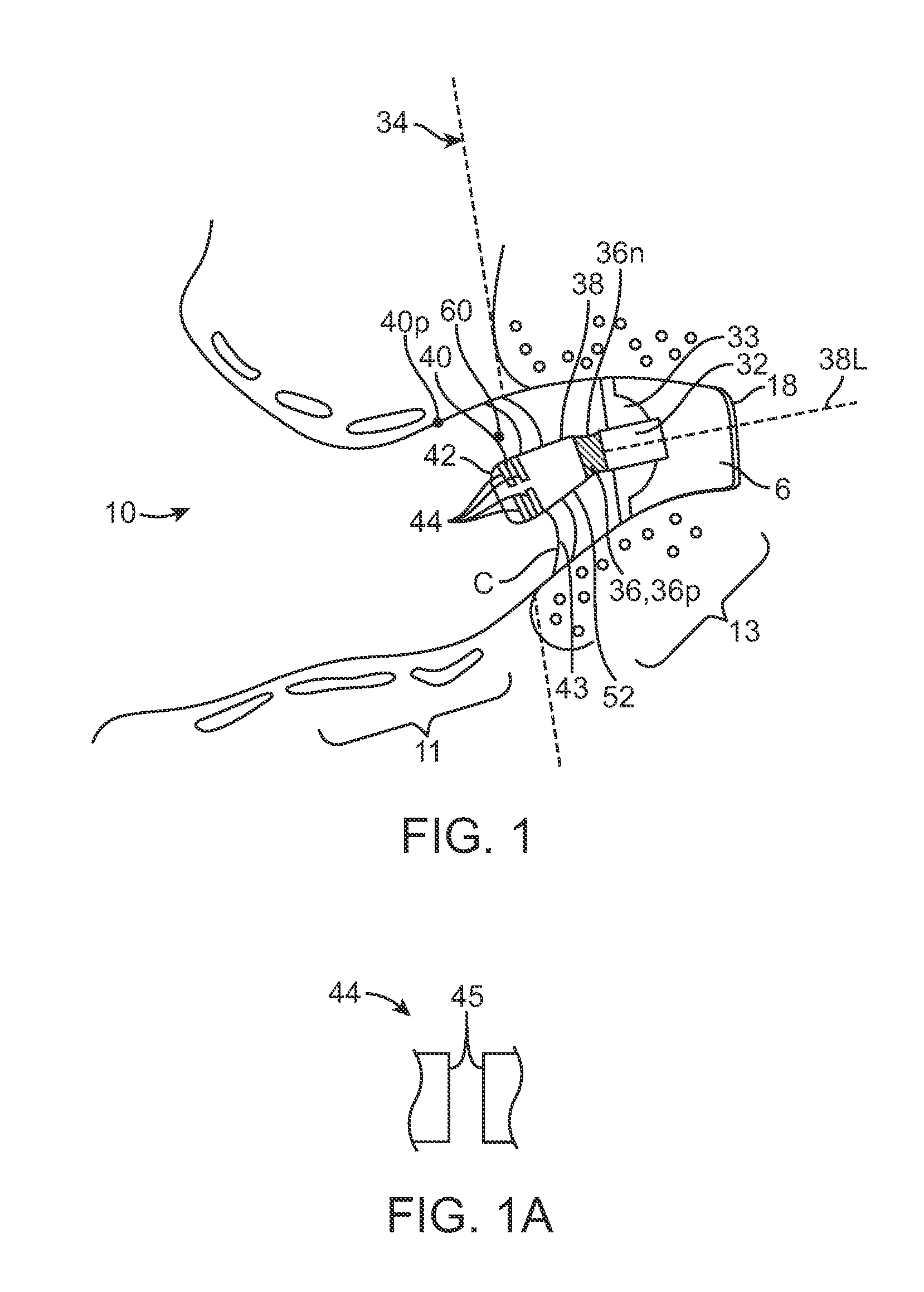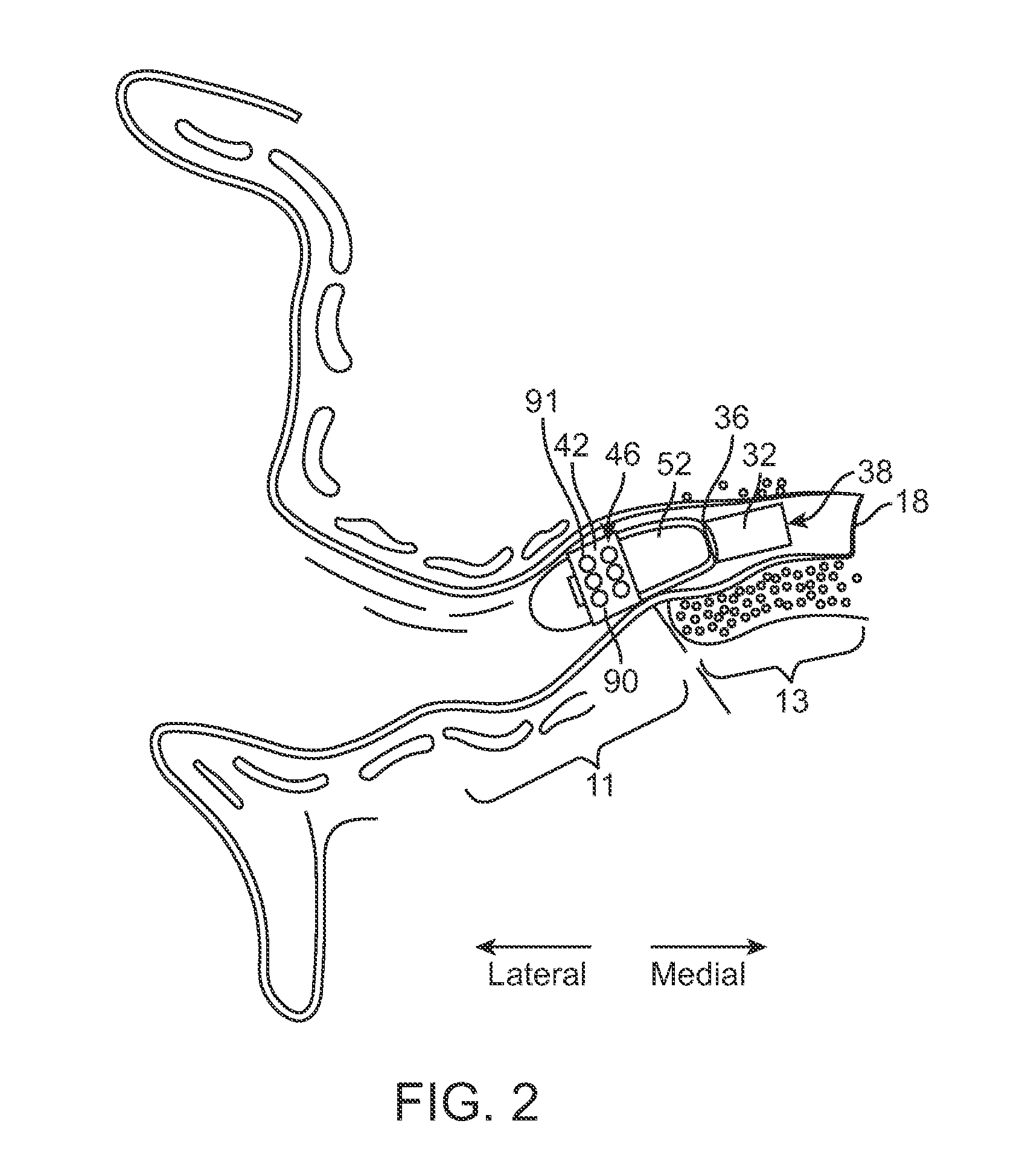Contamination resistant ports for hearing devices
a technology for hearing devices and receiver ports, applied in the direction of deaf-aid sets, complete in canal hearing aids, electrical transducers, etc., can solve the problems of affecting the performance of hearing aids, unable to meet the requirements of extended wear, and the receiver port of a conventional cic (completely in the canal) is susceptible to cerumen, etc., and achieves a high degree of protection
- Summary
- Abstract
- Description
- Claims
- Application Information
AI Technical Summary
Benefits of technology
Problems solved by technology
Method used
Image
Examples
Embodiment Construction
[0044]Embodiments of the invention provide housings for hearing device components, where the housings have an interior and an exterior, with a sound / air port (which will typically include an opening or aperture through the housing) that defines an air exchange path which provides sound and air communication between the interior and exterior of the housing. In particular, the present invention comprises structures, coatings, and / or other surface modifications which create resistance to contamination of the sound / air port which can occur when the housing is worn in the ear canal, often for extended time periods of days, weeks, or months. More particularly, the present invention provides an extended wear “completely in the canal” (CIC) hearing aid having a microphone assembly and / or a metal air battery in the interior of the housing that open to the ear canal through the sound / air port which is resistant to fouling by contaminants typically present in the ear canal, such as water, liqu...
PUM
| Property | Measurement | Unit |
|---|---|---|
| width | aaaaa | aaaaa |
| water droplet contact angle | aaaaa | aaaaa |
| distance | aaaaa | aaaaa |
Abstract
Description
Claims
Application Information
 Login to View More
Login to View More - R&D
- Intellectual Property
- Life Sciences
- Materials
- Tech Scout
- Unparalleled Data Quality
- Higher Quality Content
- 60% Fewer Hallucinations
Browse by: Latest US Patents, China's latest patents, Technical Efficacy Thesaurus, Application Domain, Technology Topic, Popular Technical Reports.
© 2025 PatSnap. All rights reserved.Legal|Privacy policy|Modern Slavery Act Transparency Statement|Sitemap|About US| Contact US: help@patsnap.com



